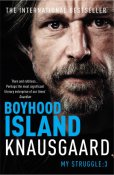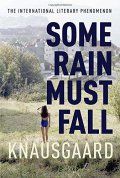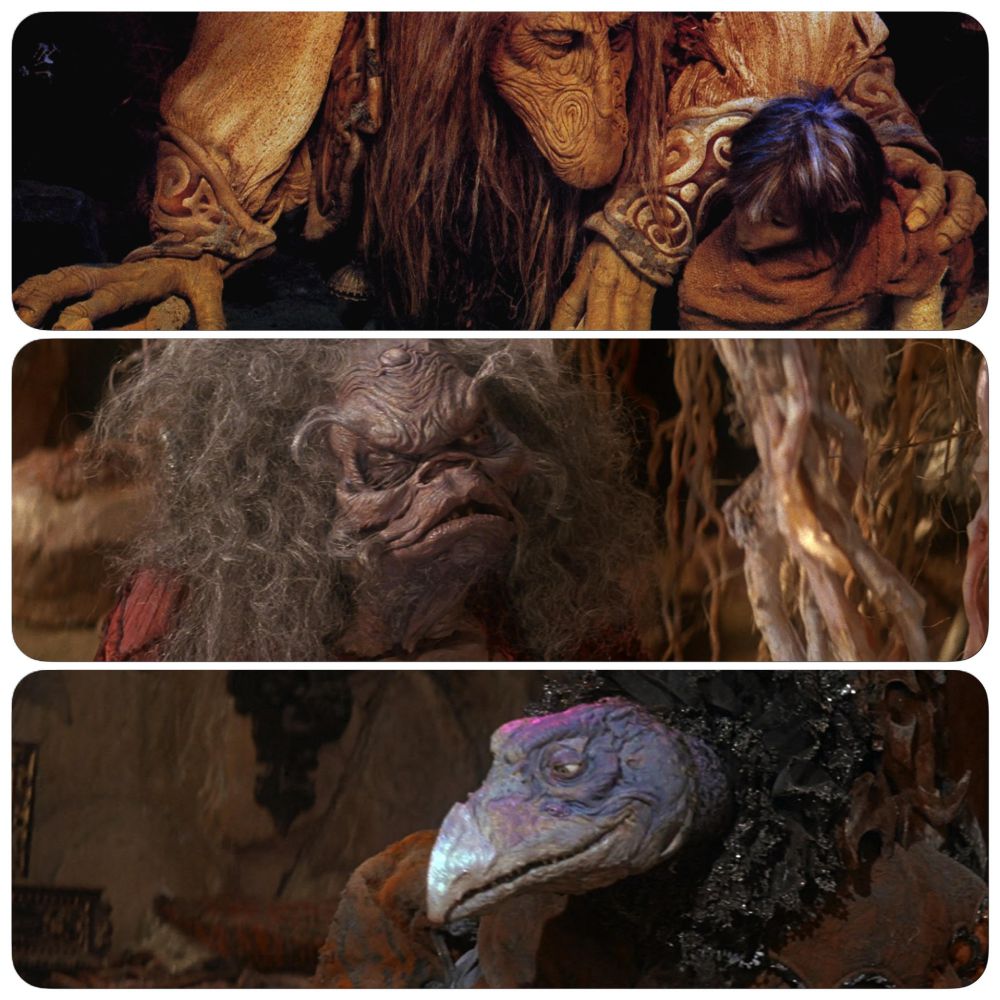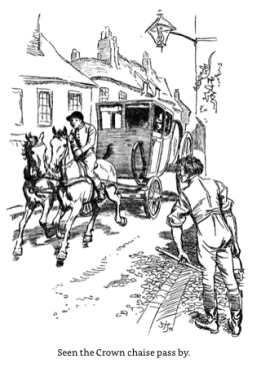Until very recently, the name and work of Norwegian writer Karl Ove Knausgaard were, for me, a sort of disturbance, a noise out there on the periphery of the literary world, or at least that part of it that I dip into regularly. What had reached me was off-putting: he was a phenomenon; he was making waves with a magnum opus that had caused some reviewers to squirm and hiss with disapproval and others to gush and rave. He seemed to have divided the literary world. He was referred to as a “writer’s writer”, prone to solipsism. He was a disruptor.
While all of this intrigued me, it mostly intimidated me. I’ve never read Proust, nor Joyce, nor anything by David Foster Wallace, for the same reason: they’re among the authors and books that I’ve always felt should be read in a classroom setting, with someone more knowledgeable and motivated to act as a guide.
I think it’s fair to say that I was repulsed by the idea of Knausgaard, whom I imagined to be an eccentric, serious, bloated, self-important, academic-looking and probably humourless Norwegian (it turns out he could have stepped right out of a Viking movie, with his chiseled and weather-beaten face).
 Karl Ove Knausgaard
Karl Ove Knausgaard
And then I stumbled upon a short review and edited interview with the author on the NPR website about his most recent release in English, Autumn, a collection of unassuming studies, or reflections, about the objects and experiences we encounter as we move around daily in the world, such as apples, adders, badgers, bottles, forgiveness, loneliness, silence. Part of the book’s appeal is that it’s simply what it is. It’s small. Entries rarely fill more than two and a half pages, and are organised into three sections— one for each of the months of fall—and are introduced by a Letter to my Unborn Child (Knausgaard’s wife was pregnant with their fourth child, a daughter, at the time). Autumn is meant to be the first of a quartet of books.
I’ve been reading Autumn for a week or so, taking it in slowly, in small increments. I’m half way through “October”, and about to read an entry titled “Stubble Fields”, having just finished “Bottles”. Reading it is a fascinating experience and I think that for many people, it may very well be the best way to discover the work of Karl Ove Knausgaard.
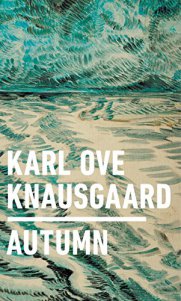 The delight I’ve experienced reading Autumn was unexpected. This was not the writing I had imagined. And so, I went back online to learn more about the author. Before his My Struggle series turned the literary world upside down, Knausgaard was already an established, prize-winning writer with two novels to his credit. It’s thus all the more stunning that his next works should have had such a seismic impact; that readers should have been so unprepared for them.
The delight I’ve experienced reading Autumn was unexpected. This was not the writing I had imagined. And so, I went back online to learn more about the author. Before his My Struggle series turned the literary world upside down, Knausgaard was already an established, prize-winning writer with two novels to his credit. It’s thus all the more stunning that his next works should have had such a seismic impact; that readers should have been so unprepared for them.
Autumn is diametrically different from the My Struggle series. Where the former is an exercise in observation and distillation, the latter is a great, unrestrained evocation and three and a half thousand-page prose experiment in six volumes; one that tore the vapour barrier between fiction and non-fiction in the way it developed a language to express non-narrative, day-to-day existence, calling the results: novels. And where the creative impetus of Knausgaard’s My Struggle series was the decline and death of his father (with whom the author had a terrible, painful relationship), Autumn is, at least in part, written in anticipation of a new life.
And yet, there’s clearly a bridge between the two —a creative integrity. In an essay that appeared in the Guardian last year that I found illuminating, the author speaks of his progression toward the flat, unadorned, non-narrative prose that has become his. It’s the voice of authenticity, of “world-nearness” and of freedom. How did My Struggle come about? In the author’s words:
“What was it? Firstly there was freedom. If I went in that direction, simply writing down things I had experienced, using my own name, it was as if all concerns about style, form, literary devices, character, tone, distance, at once ceased to exist and the vestments of literature suddenly became unnecessary posturing: all I had to do was write. But it wasn’t only the freedom of this that now fuelled the writing, it was also the unprecedented nature of it, the fact that to a large degree what I was doing was forbidden.”
There are echoes of this same fearless willingness to write about his own life, “flaring with shame and a burning sense of freedom”, that are also preserved in Autumn.
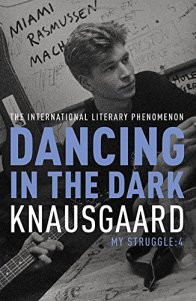
And then, there’s the quality of his writing that poet and writer Ben Lerner refers to as the way Knausgaard:
“[…] seems to barely adjudicate significance; he’s like a child who has taken Henry James’s injunction to novelists – ‘be one of the people on whom nothing is lost’ – literally; he appears to just write down everything he can recall (and he appears to recall everything). It’s easy to marshal examples of what makes My Struggle mediocre. The problem is: it’s amazing.”
This very same egalitarian attention to everything that comprises a life is also found in Autumn, producing successive entries as apparently random as: Flaubert, Vomit, Flies, Forgiveness and Buttons. The magic here is that as you begin to read them, you have no idea where they’re headed, and that’s how an entry about adders can wind its way to a dark and confusing memory of his father, or again, how a reflection about finding an apple-laden tree in the middle of a forest, can evoke joy, sorrow and freedom.
There’s always the sense, too, in Autumn, that if Knausgaard had waited and written “Buttons” on a different day, that it would have taken him to another destination altogether. Like life, his writing is both ordinary and magically unpredictable.
****************************************
Here is an excerpt from the first of three Letters to an Unborn Daughter, from Autumn:
“To someone who has lived for many years, the door is obvious. The house is obvious, the garden is obvious, the sky and the sea are obvious, even the moon, suspended in the night sky and shining brightly above the rooftops, is obvious. The world expresses its being, but we are not listening, and since we are no longer immersed in it, experiencing it as a part of ourselves, it is as if it escapes us. We open the door, but it doesn’t mean anything, it’s nothing, just something we do to get from one room to another.
I want to show you our world as it is now: the door, the floor, the water tap and the sink, the garden chair close to the wall beneath the kitchen window, the sun, the water, the trees. You will come to see it in your own way, you will experience things for yourself and live a life of your own, so of course it is primarily for my own sake that I am doing this: showing you the world, little one, makes my life worth living.”
NOTES:
-Karl Ove Knausgaard reads from his work, introduced by Zadie Smith: video.
-Bibliography of the author’s work available in English at the library:
“Autobiographical fiction”
- My Struggle– Book One (2009 in Norwegian, 2013 in English) 441 pages
- A Man in Love– My Struggle Book two (2009 in Norwegian, 2014 in English) 523 pages
- Boyhood Island– My Struggle Book three (2010 in Norwegian, 2014 in English) 490 pages
- Dancing in the Dark– My Struggle Book four (2010 in Norwegian, 2015 in English) 548 p.
- Some Rain Must Fall- My Struggle Book five (2010 in Norwegian, 2016 in English)
- Autumn– the first volume of a four book cycle (2015 in Norwegian, 2017 in English)

